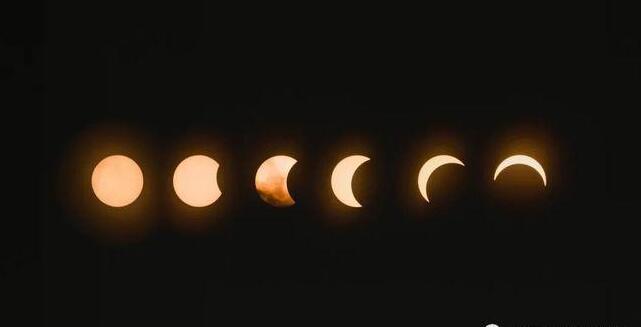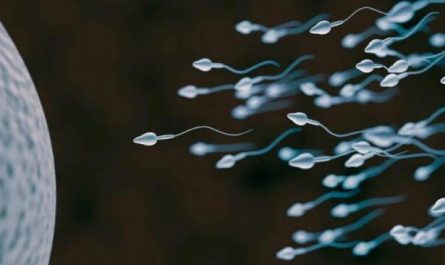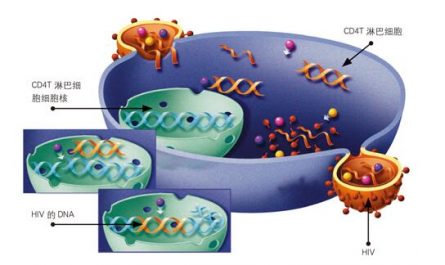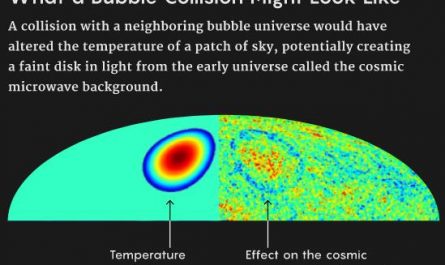According to media reports, the average period of a woman’s menstrual cycle is 29.5 days, which happens to be close to the moon’s cycle. Therefore, many cultures associate the moon with fertility. For a long time, people have regarded the influence of celestial bodies on human physiology as a myth to a large extent, and have not paid much attention to it. However, some recent studies have found that the moon phase may have some relationship with sleep and mood. In a paper published in the journal “Science Advances” on January 27, researchers analyzed women’s long-term data and found that at certain times in their lives, their menstrual cycles synchronized with the moon’s brightness and gravity cycles .
Christine Tesma-Rebble is a time biologist at the University of Vienna, but she was not involved in the new research. Tesma-Rebble said: “This research has not completely settled the debate. However, it offers a very novel view on whether the moon affects human physiology.”
Charlotte Helfridge-Foster, a time biologist at the University of Würzburg in Germany, is the lead author of this paper. She said that at first, she also had doubts about the connection between the moon phase and the menstrual cycle. She said: “On the other hand, the menstrual cycle is similar to the lunar cycle, which is very fascinating. And many studies have also found that animals-at least marine animals-rely on the moon to synchronize their reproduction cycles.” To study the moon phases Whether it will affect the menstrual cycle of humans, Helfridge-Foster and her colleagues studied the menstrual cycle data of 22 women. They record their menstrual cycles as little as 5 years and as many as 32 years.
When the moon orbits the earth once every 27.3 days, the moon will exhibit three different lunar cycles: brightness cycle, perigee-apogee cycle and lunar stationary cycle. During the orbital cycle, the moon’s position relative to the sun also changes, bringing about a familiar brightness cycle between the new moon and the full moon every 29.5 days. The orbit of the moon is elliptical. In this 27.5-day cycle, when the moon moves from perigee (the position closest to the earth) to apogee (the position farthest from the earth), the gravity drag of the moon will change. In addition, the moon’s orbit has a certain tilt relative to the earth’s rotation axis, so during the 27.3-day lunar stationary period, the moon’s gravity influence on the northern and southern hemispheres will also be different.
Researchers have found that the menstrual cycles of different women are very different, and over time, the menstrual cycle of women will also change in their lifetime. When studying the data of six women who recorded their longest periods (19 to 32 years), the researchers found that the menstrual cycles of five of them were intermittently synchronized with the lunar cycle. When the individual female physiological dates were combined, the researchers found that the dates of these menstrual cramps were significantly related to the dates of the full and new moons, and were not related to other parts of the brightness cycle.
Among the other 8 women who had recorded their menstrual cycles briefly when they were young, the menstrual cramps of 6 women were intermittently coupled with the dates of the new or full moon. When all the physiological dates of a single woman were combined, the researchers found that the menstrual cramps of three of the women were significantly related to the dates of the full and new moons, and were not related to other parts of the brightness cycle.
Similar to other studies, they found that women under 35 have an average menstrual cycle of 29.4 days, while women over 35 have an average menstrual cycle of 26.3 days. Since the cycle length of young women is closer to the moon’s 29.5-day brightness cycle, the researchers guessed that the frequency of the cycle synchronized with the moon phases of young women will be higher than that of older women. By combining the data of young women, the researchers did find that the average time for young women’s menstrual cramps to be synchronized with the new or full moon was 23.6%, while older women’s menstrual cramps were synchronized with the new or full moon. The average is 9.5%.
The researchers also found that 13.1% of the time, the date of menstrual cramps in young women coincided with the perigee-apogee cycle or lunar stationary cycle, while the data for older women was 17.7%. When the data of all women are combined, the number of times the menstrual cramp date is coupled with the full moon, new moon, and perigee date is higher than expected. The researchers said these findings indicate that moonlight and lunar gravity both affect women’s menstrual cycles, but we still don’t know how humans perceive these fluctuations.
Tips for sensing the moon
More and more evidences show that the moon affects human physiology. In an article published in the journal Molecular Psychiatry, Thomas Weir, a psychiatrist at the National Institute of Mental Health in the United States, found that the manic-depressive cycle of patients with bipolar disorder is related to the lunar gravitational cycle. Will is also one of the collaborators of the new paper. In another paper published in the journal “Science Advances,” another group of researchers found that people sleep for shorter periods of time at the full moon; people sleep longer at the new moon. Because people living in areas with no electricity, and people living in big cities-urban light sources can reduce the effect of moonlight, the results are similar, the researchers speculated that the reason behind this may be related to the moon’s gravity.
However, most of the women in menstrual cycle studies live in relatively remote rural areas, where the moonlight is brighter, which may indicate that they can more easily perceive changes in the brightness of the moon.
The study also pointed out that young women whose menstrual cycles are out of sync with the lunar brightness cycle are “night owls”, suggesting that the effects of long-term lighting at night may exceed the potential impact of moonlight.
As for the influence of the moon’s gravity, Helfridge-Foster said that people perceive these changes as “polar possibilities.” Instead, she said, she thinks humans may be able to indirectly perceive the moon’s influence on other variables. She said: “I’m just guessing. It may be atmospheric pressure… or it is also related to electromagnetic fields, because electromagnetic fields are also affected by the moon.”
Tesma-Rebble said: “I think this study is very reasonable.” But she also pointed out that the sample of the study was too small, with only 22 women, which is a limitation of the study.
Virginia Witztum, a biological anthropologist at Indiana University, doesn’t think so. She said in an email that because the study only found that synchronization was intermittent and did not find this trend among most women, “this is not enough to explain the existence of synchronization in a biological sense.”
Two studies in the 1980s similarly found that women with a menstrual cycle length of 29.5 days had a relationship between their menstrual cramps and moon phases. But other studies (including unpeer-reviewed papers that analyzed more than 7.5 million menstrual cycles) found that there is no correlation between menstrual cycles and lunar cycles.
Anna Watts-Justis, a chronological biologist at the University of Basel Psychiatric Hospital, said that most of these studies did not consider women’s age or cycle length, and the analysis of the menstrual cycle of most women in a shorter period of time may also be Missing some cycle patterns, because every woman’s menstrual cycle will be different in her life.
Watts-Justis said: “The uniqueness of (Hulfridge-Foster’s research) is the long-term personal data set. The advantage of this longitudinal data set is that researchers can explore many details. . I think this is great.” She said that this approach “reveals secrets that you can’t see in average data.”
The evolution of lunar synchronization
Helfridge-Foster and her colleagues speculate that the synchronization between the human reproduction cycle and the moon cycle may be more obvious in ancient times, and more and more artificial lights in modern life weaken the influence of the moon. A recent study found that ovulation occurs on average 12.4 days before menstruation. If menstruation starts near the full moon, then the best time for a woman to conceive will be around the new moon. Helfridge-Foster said that since it is more dangerous to go out without moonlight, it may be an evolutionary advantage for humans to hide in the nest at this time to “make babies”. Another study found that badgers mate mainly when the moon phases are darkest.
Witztum said she felt this hypothesis was “unlikely.” In the email, she said that research conducted by her and other researchers on the non-industrialized populations of Bolivia and Mali found that before modern contraceptive measures, “women are either pregnant or breastfeeding most of the time when they are fertile. Period, which inhibits ovulation and menstrual cycles-and they may only experience 40-50 menstrual cycles in their lifetime. This shows that natural selection is unlikely to support synchronization with the moon.”
However, many documents record that the reproduction cycle of marine life is synchronized with the phases of the moon, such as plankton, crabs, fish and corals. Helfridge-Foster said: “Life evolves in the ocean. When life begins to evolve on the earth, the distance between the moon and the earth is closer. Therefore, at that time, the influence of the moon on the earth may be greater. “Ancient creatures may be more affected by the moon cycle. She said that if “adaptation to the lunar cycle still exists in our genes,” the human response to the lunar cycle may be a relic of our evolution.
Witztum also disagrees with this assumption. A few days before a woman’s menstrual cramps, the production of progesterone hormone will stop, and the reduction of this hormone level will cause menstrual bleeding. She said that in order for women’s menstrual cramps to be synchronized with the full moon, the progesterone hormone production structure needs to be signaled before the full moon. She said: “For the evolution of this complex signal, and for its retention throughout the evolutionary process, there needs to be a certain reproductive advantage, but I don’t think there is any reproductive advantage in this.”






